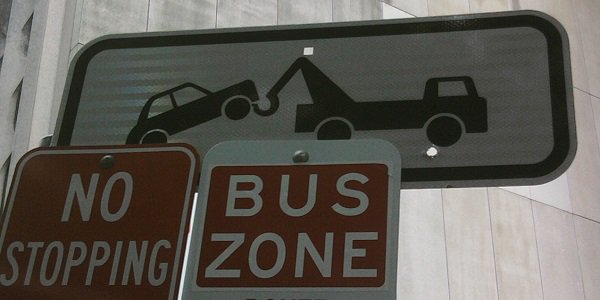December 24, 2015
Horse 2049 - Now Towing Away The Past
Perhaps this photograph isn't the best example of what I'm thinking but it's certainly illustrative. That car looks like a small two door coupe of the sort that might have been popular in the 1950s. That silhouette is more reminiscent of a Morris Minor or an Austin A30 than it is of a modern two door coupe like Toyota Yaris or a Honda Jazz.
This sort of phenomenon isn't just unique to this sign either. The "High Wind" signs on the side of motorways show a picture of a car which looks as though of was from the 1960s and with a caravan to match, the Emergency Phone signs still show a picture of a handset (though that is likely to be accurate for what's inside the box) and I've seen Railway Crossing signs that still have pictures of steam trains on them, despite the fact that the last steam engines to run in regular service disappeared more than fifty years ago.
Signs for telephones still tend to have something to represent the rotary dialer even though buttons have long since replaced all rotary dialers (to the point where if you show kids a dial telephone they often don't know how to use it); signs for Speed Cameras have pictures of cameras which clearly look like 35mm film cameras despite nobody using film anymore except for specialists and enthusiasts and even people going to the cinema still speak of going to watch a "film".
Bus Stop signs still tend to have pictures of buses with split windows on the front, even though split window buses tended to disappear towards the turn of the century.
I must admit that I'm also guilty of throwing things into this anachronism stew. In the production of a play of the book of Esther that we did at our local church, the noise that I chose to use to show that dispatches were being sent to all 127 provinces of Xerxes' empire was the sound of Morse Code; this was in contrast to the fact that I'd used the two default sounds for Twitter and other SMS services to show messages being sent back and forth between Esther and Mordecai. Although Twitter and SMS are 21st Century inventions, they clearly do not belong in the 6th Century BCE; neither does Morse Code but telegraphy and telegram services are all but expired.
It’s not like cultural anachronism is a new thing either. The Authorised Version of the Bible which was commissioned by King James I (or VI if you're Scottish), contains second person pronouns like "thee", "thou" and "thine" even though in the opening years of the seventeenth century they were considered archaic even then. Having said that, the Yorkshire and Geordie dialects still retain these as part of spoken English, even today.
Place names survive well after the thing that they're named after has disappeared. I know of Pearce's Corner and Thompson's Corner but I have found no sources to tell me who Pearce or Thompson were. Most Sydneysiders will be familiar with the name "The Meccano Set" which is the intersection of Woodville Road and Henry Lawson Drive with the Hume Highway at Lansdowne but few will be aware of what Meccano is.
People still refer to the F3 Freeway even though as far as I'm aware, it was never ever signposted with F3 signs, it was always part of Highway 1.
Street signs like other parts of cultural detritus, are subject to the same sorts of memory drift as everything else that we curious creatures called humans have invented. Their job is to convey information as quickly as possible and that sometimes means speaking to older people who remember older things. Collective memory tends to fade at a much slower rate than the actual rate of change of society; hence the reason why railway crossing still have pictures of steam trains, signs for telephones still show outdated handpieces and why tow-away signs still show 1950s motor cars.
Subscribe to:
Post Comments (Atom)


No comments:
Post a Comment